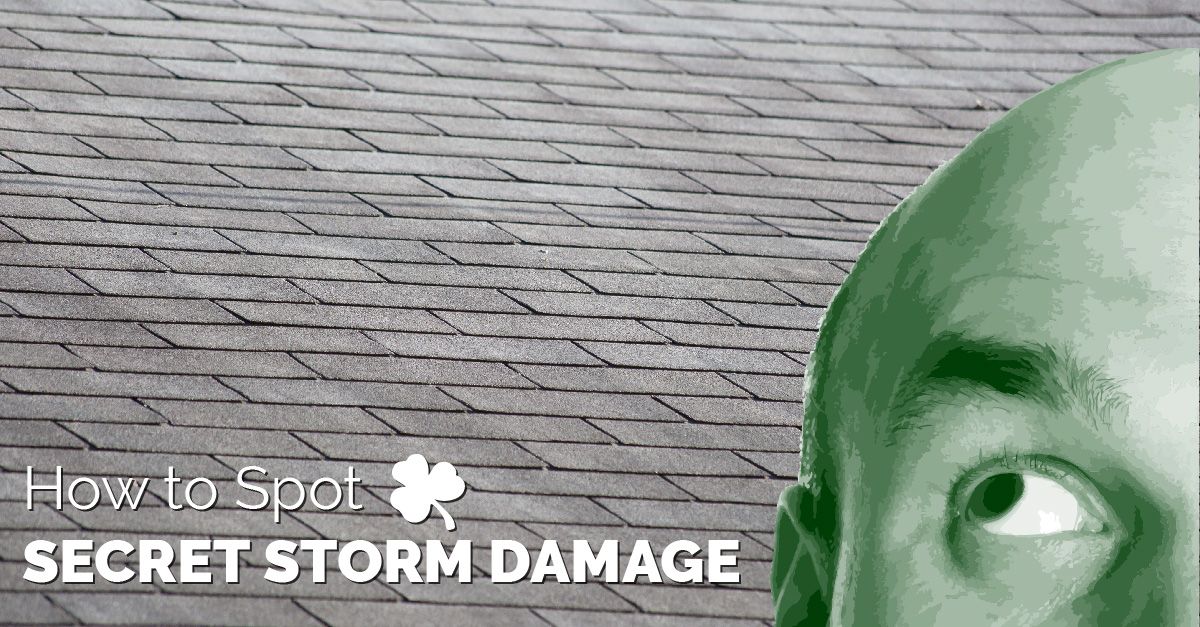Punctured Tile Underlayment
Even if a storm doesn’t knock your roof tiles out of place, or cause breakage or cracking, wind can make the tiles jiggle up and down or “chatter.” Even though the tiles themselves look fine, their repetitive movement can put small tears and punctures in the underlayment that allow water to seep into your roof system and attic every time it rains.
Broken Shingle Seals
When there aren’t obvious areas of broken or missing shingles (or curled or uplifted shingle edges) you might mistakenly think your roof is still watertight. High winds can also lift up shingle edges just enough to break the seals between the rows. Broken seals are hard to spot if the edges flatten down again after a storm, but they can let water get under the shingles, where it saturates the decking and eventually works its way inside your exterior walls or attic space.
Hail Injuries on Shingles
Evidence of hail damage on your shingles can be virtually undetectable to the untrained eye, especially when it isn’t severe. Widespread minor impact damage can knock off some granules, and loosen more, so they continue to shed over time. Any areas where granules are missing leave the underlying substrate vulnerable to UV degradation that will make your shingles age and fail prematurely.
Flashing and Seal Deterioration
When you’re walking the perimeter of your home to check for damage after a storm, you’ll find it easy to spot mangled, bent or missing sections of eave flashing. Other areas that are flashed or sealed to redirect rain away and keep the roof watertight aren’t easy to see, like the valleys and around dormers, skylights, plumbing vents, and the chimney. Even one area of compromised flashing is a potential leak source that can cause costly damage over time.
If you’re concerned that you may have hidden storm damage on your Naples-area roof, contact us at Kelly Roofing to schedule a certified inspection.
